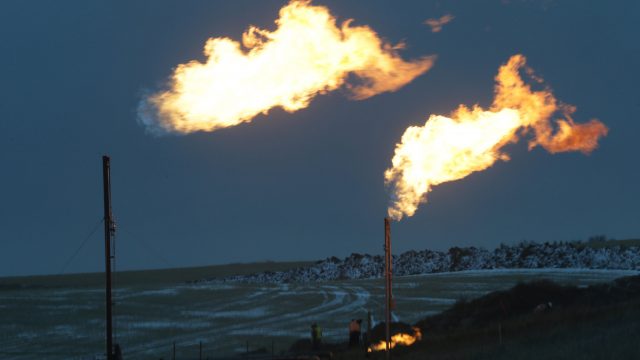Tribes Take Aim At Wrong Target With Fee Proposal For Flaring

It is understandable that the folks on the Fort Berthold Indian Reservation want to fix the flaring problem. After all, the reservation is home to some of the worst flaring in the state.
Last month, based on numbers I obtained from the Department of Mineral Resources, I pointed out that flaring on the reservation was over 30 percent of gas produced while flaring in the rest of the state was under 27 percent. Even that differential is small. In the past state officials have told me that flaring on the reservation has been over 50 percent, even as statewide flaring was around 30 percent.
Flaring is a problem in North Dakota, and it is particularly acute on the reservation, but I’m not sure what the tribe is proposing here is the right fix:
Tribal leaders on the Fort Berthold reservation in the heart of North Dakota’s oil patch are proposing fees for companies that burn and waste natural gas.
The Three Affiliated Tribes outlined its plan to impose fees in a six-page document sent to oil companies. In it, the tribe said companies would be required to pay royalties for flaring natural gas to compensate for lost revenue when the gas isn’t brought to market and sold. …
The Three Affiliated Tribes notified oil drillers late last week of the fee plan, which would require companies that burnoff natural gas to pay royalties beginning a month after a well has been drilled.
Separate documents also furnished by the oil companies to the AP show that tribal officials earlier proposed annual rights-of-way and other charges for the companies to develop gas-gathering systems and transmission pipelines on the Fort Berthold Reservation. The reservation, which spans a million acres in west central North Dakota, is home to the Mandan, Hidatsa and Arikara tribes.
Not only is the tribe proposing fees that would make energy development on the reservation more costly – costing that historically impoverished community jobs and commerce – but they’re also proposing regulations which would make it harder for the oil and gas industry to address the flaring problem.
One of the biggest obstacles to gas capture on the reservation is how difficult it is to build the capture infrastructure. The geography is challenging, but beyond that there’s the fact that the industry has to contend with bureaucratic red tape from multiple entities. Building infrastructure on the reservation requires the industry to work with the US Fish & Wildlife Service, the Bureau of Indian Affairs and the Bureau of Land Management. The tribe, obviously, and the state also have a say.
This bulwark of regulators is the reason why flaring is worse on the Fort Berthold Reservation than elsewhere. Taking aim at the industry with more regulation isn’t going to fix a problem that’s caused by overregulation.
North Dakota’s state regulators have a goal of getting flaring down to 10 percent statewide (including the reservation) by 2020. Already infrastructure is coming on line that will produce significant reductions in the statewide flaring rate in coming months, and more infrastructure (including a new gas processing plant) was announced earlier this month to continue those reductions.
The North Dakota Industrial Commission’s new requirements for gas capture are paying dividends already in providing incentive to capture the gas and use it instead of burning it off. The tribe would do well to continue their partnership with the state which is already moving in the right direction on this issue instead of setting off on their own ill-conceived crusade which might reduce flaring, but with some collateral damage.




